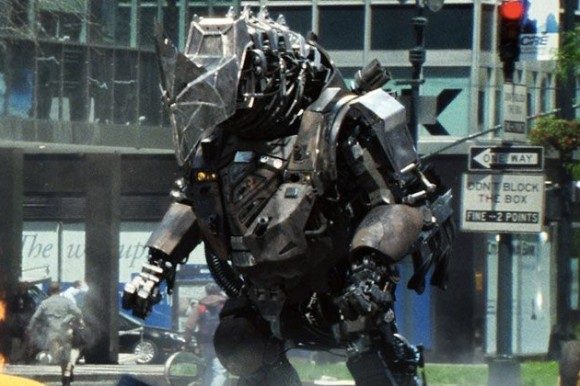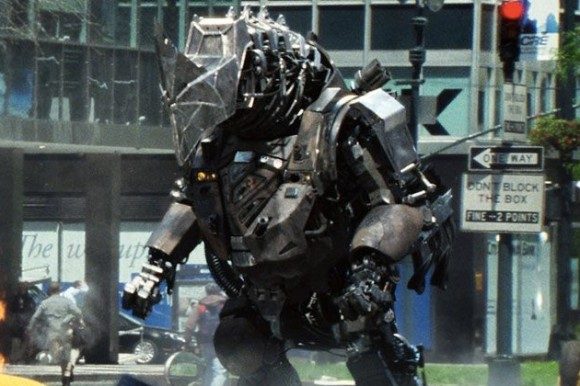Previously on “Make Way For The Bad Guy,” I discussed villains as leads in movies, why it works best with an R rating, and issues with a potential Boba Fett spin-off film within the Star Wars universe. Sony, also with starry-eyed mega-franchise dreams, sadly realized that the only superhero franchise it had was Spider-Man. So the studio announced plans for Sinister Six and Venom movies, because that’s really all they got. I guess Reporters of BUGLE doesn’t have the same ring as Agents of SHIELD.
Certain superhero villains can easily qualify for their own films. With his tortured past and philosophical grounding, Magneto is a fascinating character on his own accord. Nolan’s Batman villains all had rich inner (and outer) voices that could easily warrant them the spotlight. Although Zack Snyder’s take on Lex Luthor is as yet unknown, Brian Azzarello’s “Lex Luthor: Man of Steel” limited series provided Superman’s greatest villain with genuine complexity and gave us an understanding of his actions. In the Spidey comics realm, Venom has traditionally been a villain-turned-anti-hero, which makes him the most suitable guy in Spidey’s rogue gallery to qualify… in theory.
Despite my complaints with a Boba Fett movie, I acknowledge Star Wars Phase III has countless opportunities to surprise us. The Amazing Spider-Man franchise lacks this luxury of unpredictability as we have unfortunately seen what it has to offer already. When the most psychologically deep bad guy we’ve gotten is Curt Connors/The Lizard from the first movie, we have a reason to be concerned.
The Amazing Spider-Man 2 presented us with three villains: Electro, Goblin, and Rhino (plus, in a cut scene, Norman Osborne’s head in Futurama technology)…, which would have been a great lead up if the characters were interesting. Unfortunately, all of them ended up being one-dimensional and cartoony, with Paul Giamatti the only one really relishing in the opportunity to go over-the-top. Even worse, all three shared the same exact motivation: “Must kill Spider-Man for slighting me.” That’s fine for building an action sequence, but not a solid basis for the protagonists of a movie.
Then again, the image of these idiots sitting around discussing how to defeat Spider-Man without actually having Spider-Man in the movie seems like a bizarre and awesome mix of The Venture Brothers and Waiting for Godot.
While Boba Fett and the Sinister Six movies have their own respective set of problems, they carry with them some similarities. Both series’ villains lack depth. It works for Boba Fett because his popularity came from his lack of history and stoic nature, but it’s terrible for the other. The Amazing Spider-Man‘s villains don’t have much in the way of personalities, but that seems more to do with poor filmmaking. Nobody expected Boba Fett to hit it big, and it took decades for the extent of his popularity to come to fruition.
However, the makers of The Amazing Spider-Man 2 knew that this movie would be used to launch something. Writers Alex Kurtzman and Roberto Orci and returning director Marc Webb had the opportunity to build up the baddies and provide them with the complexity, or at least some sort of humanity, to launch them into a film of their own. The current film, at 142 minutes long, had more than enough time to make a compelling villain or two, but with so many characters, villains and otherwise, fighting for screentime, they were the ones who suffered the most. They could have done so much more to make audiences care about the future of Spider-Man (the character and the franchise) than the elder Parker sending a YouTube video, and they deserved that level of respect. Instead we got magic blood, forgotten birthdays, and boxer shorts. Throwing in villains for the sake of throwing in villains is usually the death knell for any franchise, as Batman and Robin can surely attest.
While chasing the Fin Fang Foom of the one mega-franchise, the filmmakers ended up harming their main property. In the same way that The Amazing Spider-Man seemed to be created mostly so that Sony could keep the rights to the character, The Amazing Spider-Man 2 seemed to be created mostly to lead into Sinister Six. If history is any indication, the franchise will continue thinking three steps ahead while ignoring the move right in front of them.
There’s probably no better example of this in the present movie than Goblin. His birth and dispatch was even more forced, awkward, and rushed than Venom’s in Spider-Man 3. The best friend relationship between Harry and Peter wasn’t allowed to build at all, especially problematic considering they hadn’t seen each other for ten years. Harry’s decision to resort to the spider goo seemed hasty more than tragic. And because we got Goblin, the filmmakers felt that they had to kill Gwen almost instantly just to fulfill her comic destiny. Particularly disappointing because the thing most audiences and critics praised about the films was the relationship between Peter/Gwen and the chemistry between the two leads.


I’m not really all bad, apart from the fact that I seem to live for chaos and have exhibited no redemptive traits so far!
Gwen’s death should have been a plot driver, not something aimlessly thrown on at the end of a movie that was full enough already. Following the death of Gwen Stacy, we never find out how Harry was captured, if Spider-Man helped bring him in, or if the Webslinger sought vengeance. What should have been a defining moment for the series ends up losing its soul. Peter’s response should have been more than a multi-month moping montage. And Harry’s response could have provided the character with some substance – did he feel guilt over what he did while under the power of the chemical? Did he realize he did wrong but cared more about the sense of power and control? These are weighty and fascinating aspects worthy of exploration, but all that seemed to matter was getting a clumsy coda where an incarcerated Harry talks about developing a group of six nefarious people to lead into the Rhino attack/set-up for the next installments.
As for the future? Perhaps the most pertinent example of how The Amazing Spider-Man franchise sacrificed the single-movie story for sake of the mega-franchise is OsCorp creating the gear for Doctor Octopus, Vulture, and other rapscallions. Much of Spider-Man’s rogue gallery is defined by their relationship to technology and the technological accidents that made them evil. Giving each villain his or her own skill set and motivations is what allows the characters to stand out from one another and gives the audience some way to latch onto them as people. By essentially turning all upcoming villains into men-for-hire, the filmmakers will remove a good portion of the fun of origin story … presumably just so they could get more bodies on the screen quicker and rival superhero franchises like X-Men, The Avengers, and Justice League. Ironically, having OsCorp behind everything in The Amazing Spider-verse ends up severely shrinking the possibilities by making everything seem so insular.
In discussing the ongoing plans, producers of The Amazing Spider-Man have said that the fun in doing a film like this is that “nobody’s all good, nobody’s all bad” (Matthew Tolmach) and “the villains are victims of circumstance. If you look at our villains, none of them were born like that. Our villains are nice and complex …” (Avi Arad). And we’re supposed to trust them to handle six difficult-to-handle protagonists? All I saw were mad men out for vengeance for no particularly compelling reason. If this was how they envisioned Electro, I am morbidly curious to see their idea of an anti-hero Venom.
Bad guys can make great protagonists, but they need some complexity. Even if we don’t agree with their motivations, we need to at least understand and partially empathize with them. But not all bad guys should be protagonists. Sometimes, in more black and white tales of good and evil, simplicity is better. Lurking menacingly and barely saying a word says so much more than learning the childhood tragedy that gave a guy his wardrobe. Existing just so someone in a spandex costume can make snarky comments as he pantses you can actually be just good enough. But you can’t have both, and trying to go back and fix past mistakes is apparently not one of The Amazing Spider-Man‘s powers.
Postscript: Hope For The Future…And For A Long Time Ago
The past two article have been relatively cynical, but it’s always nice to have some sort of hope that maybe things won’t continue down the path we most fear. Drew Goddard has been attached to Sinister Six as director. A regular on Joss Whedon’s team and the writer of Cloverfield, he has been welcomed into the Marvel fold by being the showrunner behind the upcoming Netflix Marvel Cinematic Universe tie-in series Daredevil. More importantly to this current situation, the last film he directed was the horror-comedy The Cabin in the Woods. One of the funnier films to come out in recent years, The Cabin in the Woods proved that he knows how to toy with a genre’s conventions and turn what should be (at least five) one-dimensional characters into something greater. Maybe he can’t remedy all that happened before, but he is a creative force worth the benefit of the doubt.
On May 22, 2014, it was announced that Star Wars picked up Godzilla and Monsters director Gareth Edwards to helm its first spin-off movie in 2016. While we don’t know what that movie is, many expect it to be Boba Fett. As his previous two films showed, Edwards knows how to generate some level of connection between the audience and menacing creatures who don’t really talk much.


